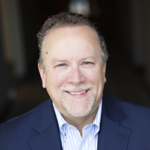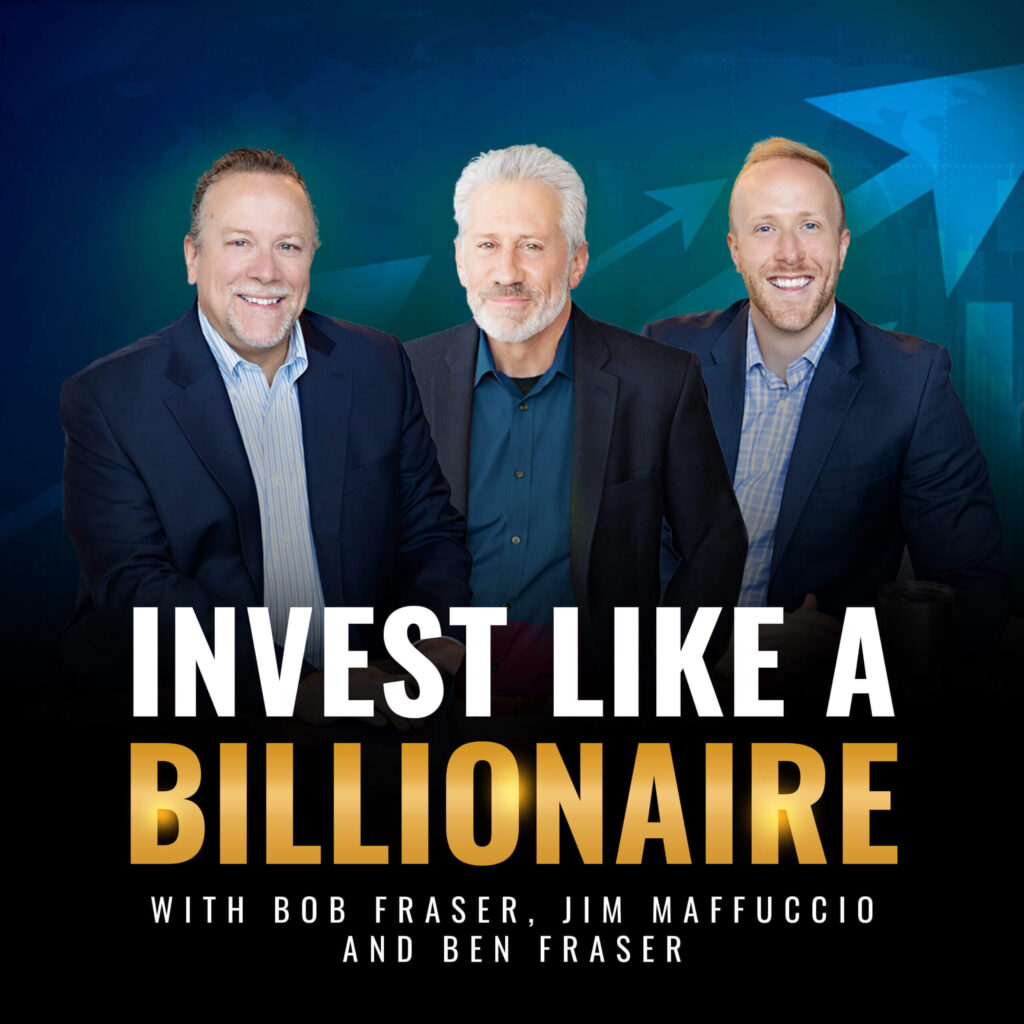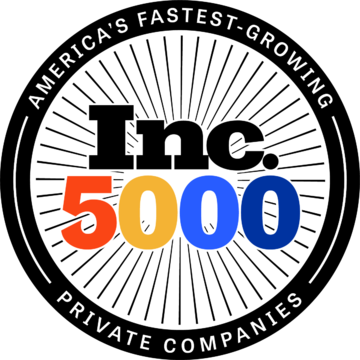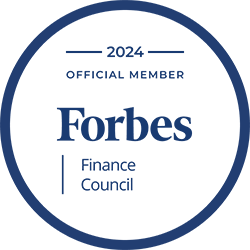
Most investors don’t know that there is a huge gap between how the ultra-wealthy invest compared to the average individual investor. The ultra-wealthy (billionaires, institutions and family offices) have large portions of their investment portfolios allocated to investments outside the stock market and in alternatives like real estate, private equity & hedge funds. Meanwhile, the average high net worth investor is mostly invested in stocks and bonds. Listen in to learn why there is this gap and where these alternative investments fall on the alternative investment continuum.
—
Watch the episode here
Listen to the podcast here
How The Wealthy Invest & The Alternative Investment Continuum
Welcome to the Invest Like a Billionaire Show. I am your cohost Ben Fraser joined by fellow cohost Bob Fraser. We are really glad that you’re joining us this episode one. In this episode, we want to talk about why are we doing this show? What made us put time and effort into putting this content together for our readers? We’re excited about it. It’s a little bit of work to do all this research and everything but we’re excited to share a lot of this with our investors. The goal here is to educate investors on the world of alternative investments and what we’ve discovered through working with investors, with our funds, which is Aspen Funds and other institutional investors that there’s this huge gap of investing between the ultra-wealthy, the billionaires, the family offices, the pensions endowments and the average individual investor.
The way they invest. The little guys invest differently than the big guys. The difference is why?
Alternative investments and that’s made up of real estate, venture capital and hedge funds, which we’ll talk about a little bit later but the whole point is it’s not just a small incremental difference. It’s a massive gap. The real reason is most of these types of investments were not available to the general public. The general retail investor. Through the JOBS Act of 2012, it completely transformed the landscape of these types of investments.
Now the little guy has access to the same vehicles that the big guys have and they can play that game.
The big guys have been doing this for a long time. What are the strategies? What are the investment types? What are the tactics and tax strategies that these investors are using at a very large level and bring them down to an individual’s level of how can we emulate the best practices? The first question may be, “I’m not a billionaire so I can’t invest like a billionaire,” and you’re right but there are things that you can pull from best practices of what they’re doing and how they’re doing it. You can get pretty close. Before we jump into that, we just want to show you some pretty interesting charts. Through our research, we saw this and we’ve talked with our investors about this.
Our investors understand the need for filling this gap but it’s too good not to share. This is information that the general public needs to see because there’s this huge opportunity for improving the returns in our portfolios and making our diversification better. This first chart is some research that we’ve done that shows the disparity between how institutions are investing in how individuals are investing relative to alternative investments. The average institutional investors are investing somewhere close to the 25% to 30% range in private alternatives investments.
This means not in public stocks and bonds.
It can be real estate, venture capital or hedge funds but it’s something other than stocks, bonds and mutual funds, which according to this chart, 95% of what the average retail individual investors are investing in through their financial advisor are what they’re familiar with. This is what most people think of when they think of investing is buy some stocks, go buy some Apple, go buy some Tesla. That’s not bad.
There are huge advantages to alternatives. We’re going to get into that and show what some of those advantages are.
The next chart here is a chart from the Yale Endowment Fund. Everyone has heard of Yale. Ivy League school, one of the better educational institutions out there but what a lot of people may not know is that their endowment fund is really a pioneer in this space. They’ve been pioneering this for decades. I think it was the 1970s. When everyone was zigging and they decided to zag and went into private alternative investment. They made it not a small little toe dip. They made it a big target allocation to these investments. It’s proven out very well for them. They’ve been a pioneer. They’re the first ones to do it. Now a lot of these bigger endowments, like Harvard and other ones, are following them but they’re the first to do it.
You can see their allocation. I look at this domestic equity just to point that out. It’s 2.5% in the basic US stock market.
[bctt tweet=”The little guys invest totally different than the big guys. The difference is alternative investments.” via=”no”]
It’s much inverse of the average.
Why is it all so cool? Why should we pay attention?
What it all comes down to is, are you getting better returns? What’s the risk that you’re taking to get those returns? They have outperformed their domestic equity index by a good margin. They say they’ve hit nearly a 10% annualized return ending June of 2020, the twenty-year timeframe up to that point. During that timeframe, the stock market basically returned about 6.2%.
They got almost 50% higher returns than the basic stock market.
You may think they’re changing now. This is recent data that they are targeting.
The crazy thing is they’ve done this because their mandate is less volatility. They don’t want the volatility of the stock market because they’re running an endowment. They’ve achieved those gains with less volatility than the average investor. All these alternatives are the key to doing that.
A concept that we’ll talk about in future episodes is a risk-adjusted return. You can have two different opportunities that are going to pay the same return but if one has a lot more volatility, which is a great proxy for risk, how much is the price going to go up or down in a given time period? How big are those price swings? You want the one that’s going to have a lot less volatility that offers a single return because it’s much safer. That’s what they’ve done and it’s proven out for them. The next chart here is from a group called Tiger 21. Most people probably haven’t heard of this group. It’s an exclusive club for the ultra-wealthy and you have to have I think $10 million of investible assets to be a part of this group. They publish all this research of what their investors are investing in. They have around $70 billion of assets.
It’s a look inside their portfolios. They share how they’re ultra-wealthy in investing. What does the chart tell us here?
It follows the same lines, what we’ve seen in the past charts. The number one category is real estate and this is private real estate. Private real estate investment opportunities. The next one right behind it is private equity. We’re going to do a whole episode on that.
Most of those two together are 50% of their investments.
Take it one quick step back to Yale is they target a 50% allocation to these private alternatives in illiquid investments as well. It’s a huge gap. Their allocation to the stock market domestic equities is around 22%. They’re not investing in stocks, but it’s one portion and it’s a decent-sized portion but it’s not the main thing. It’s not the only thing. That’s the key. Another chart we want to show is this is from Ernst and Young. This is some data that they’ve published. This is looking again at the alternative investment space. They track the ultra-wealthy’s allocations to these different asset classes, hedge funds, real estate private equity and the trends over time and really quickly. You want to hit a few of the main spaces here.

It’s basically 25%, 25%, 25% and the most recent data, hedge funds, real estate and private equity. That’s 75% of their investments are alternatives that E&Y is tracking. Those are the big three alternatives.
If this data is not compelling, you might not want to read this anymore because this is what we’re going to be talking about. This is the real big gap here. What a lot of investors, when they see this, there’s this big disconnect. “Why am I not hearing more about this?” That’s what we want to do. That’s what we want to share with investors is help you be smarter in how you’re investing, find these opportunities.
What are they? How do they work? What are their pros and cons? How do you find them? How do you do the due diligence on them? What are some of the big players in the space doing? We’ll be doing interviews with individual investors who are out there and getting their tips and strategies, as well as timing. What are the thinker’s hot alternative strategies for the season?
What we’ve found through a lot of conversations with investors, even financial advisors, is the biggest challenge here is generally lack of education, number one and lack of access, number two. They theoretically like the concept. “That’s cool. I want to get returns like that but I don’t know where to go. Where do I find those best offer investments?” It’s this challenge of, “I don’t know what I’m doing. Where do I even find the opportunities?”
I think most investors feel confident in their ability to make the call. They don’t understand it enough to know what to do. Even these private real estate alternatives are as simple as you think that would be. There’s a lot to know about this. Most investors don’t feel confident in their ability to make that call. That’s one of the things we want to do is pull the covers of this and look in-depth at some of these alternatives and how to win with alternatives.
Outside of this show, Bob is a cofounder and co-CEO of Aspen Funds and I’m a VP of Finance at Aspen Funds. Through Aspen Funds, we’ve been in this space for a while. You’ve got a private alternative investment and we manage the investment for hundreds of retail investors as well as institutional investors. We want to get more people excited about this because what we’ve been experiencing and what our investors are experiencing is open to a lot more people than are in. What we want to do is help investors become smarter. We want to talk about what are the economic cycles and what are the trends going on in the economy that impacts how we’ll be investing and help us make smarter decisions to be on the right side of the economic cycles.
We want to look at what are the investing trends and we hear all these buzz words that the media is throwing out there. What does that mean? Are they something that we should be paying attention to? We want to uncover a lot of these opportunities that most investors don’t hear about all the time and have a platform for these cool opportunities to be shown to investors and train investors on how do you do due diligence? How do you determine if this is a good opportunity? Where do you go find these? We’re going to talk about your background and how it relates to these alternative investments.
I was trained at UC Berkeley as a Computer Scientist. I’m a very analytical personality and run a big tech business in the early ‘90s. That was a great learning experience but I also have run a hedge fund for several years. I’ve been a private investor for several years. I was successful at different points. My background is in my passion, besides Aspen alternatives is economics. I’m a student of economics and I’ve been writing an economic newsletter for many years and have a pretty good track record there.
If you haven’t seen our economic content, definitely look for that in the Resources tab because we’d love to publish that. My background, I’m a Finance MBA graduate. Right out of college, I went into investment management. I worked for a large boutique investment manager and working with institutional investors. These were $100 million up to $1 billion investors that were investing in these alternative investment strategies. That was a unique experience and window into how these institutions, big endowment, big pensions, how they look at and evaluate these times.
Before that, you worked for a registered investment advisor managing hundreds of millions of dollars. You understand the mindset of investment advisors and how they manage other people’s money, which is a little bit eye-opening. It’s like looking at how the sausage is made here. It’s not always flattering. You’ve also been a commercial banker for many years. You really understand how to pick apart a deal and how to understand who’s making money, how they’re making money and why they’re making money. You have a diverse background. It’s interesting this whole alternative space.
Who is this show for? We have two primary goals and types of folks that we’re trying to appeal to with this. It is important to note on the front end here that most of these opportunities are going to be limited to accredited investors. That’s a rule set by the SEC of who they basically determine who can and can’t invest in these. That is changing and hopefully, a few years down the road that continues to open up because there has been some movement there but that has a net worth of $1 million or more excluding your primary residence or being a high-income earner. If you have a single income of over $200,000 or a joint income of over $300,000 for the past few years then you qualify.
[bctt tweet=”When the tides are coming in, all boats float. When the tides are going out, all boats drop.” via=”no”]
It’s important to say that because these are limited to those folks but most investors that have built up net worth, in our experience, have mostly done that through putting money away in a 401(k) and getting a company match. There’ve been high-income earners but they’re not experts in investing. They’ve set it and forget it. Don’t worry about it but you’ve now become interested and you’ve heard about these investments. You want to learn more but you don’t know where to turn to. That’s a big subset of our investors where they’ve been exposed to this but they want to get more intuitive.
We want to help break down what the private market looks like relative to the public markets. A lot of investors are aware of valuations in the market and they don’t know where the stock market’s going to go. It’s been going up for a while but it’s becoming more volatile. They want diversification. Everyone knows that that’s important it’s difficult to get. Especially over time, correlations have increased between public asset classes, which we’ll talk about at another time. The idea of the core person that we’re trying to impact and reach in this show is the active real estate investor. There has been a lot of investors that have made money through real estate, actively buying rental portfolios or investing in other asset classes but they want to go more passive.
They’ve made good money in real estate. They want to hand the reins over to somebody else and not have to be in the day-to-day. That’s what we’re going to break down. What does it look like to invest passively in these types of deals where you’re not the one having to actively manage the day-to-day? How do you find the right sponsors to work with? How do you do the right vetting to make sure they’re not crooks and frauds? That’s what we’re going to talk about and who we’re targeting. We wanted this show to appeal to what people wanted. Before we even launched this, we did a survey with all of our email lists and all of our investors and got some great responses back when we said, “What are you most interested in hearing about?”
We have some ideas but we want to make sure it’s going to be interesting to you. It was really interesting data. The number one interesting topic that folks chose in the survey was understanding the types of alternatives that are available. Most people don’t even know what’s available. What does the universe first look like? It’s growing all the time. There are more and more things being opened up. That’s the number one thing and we’re going to hit a lot of that. The next most important topic was learning from other successful passive investors. This is what I’m excited about too because I’m curious as well.
We have a killer lineup of very successful high net worth investors. We’re going to be spilling the beans on what they like, why they like it, where they’ve made their money and where they’ve lost their money. You learn more sometimes from the mistakes. Why make your own when you can learn from someone else’s mistakes? We’re going to have a lot of fun talking to some of these folks. We have an all-star lineup here. It’s going to be fun.
The other topic that’s obvious and we thought would be one of the most interesting ones is how do I do diligence on these investments? I know I want to do this but I don’t have the confidence to know what questions I should be asking.
To keep from making a mistake.
We asked them, “What’s the biggest pain point? What’s the biggest frustration you have? When it comes to investing in general, the number one response was, “Where do I find the best investment opportunities?” It’s difficult because there are many voices out there and many different opinions.
There are thousands of these and there’s only so much you can find out by reading their pitch deck or something. You don’t really know all the data.
I’m going to break down a little bit of the types of topics and segments we’re going to have in the show. The cool thing is we’re not going to be plain vanilla, same content every week, every episode. We want to break it down and mix it up a little bit. One of the primary segments we’re going to do, which we talked about, is the Passive Investor Spotlight. We’re interviewing another investor just like you. They have experience in investing in alternatives. We want to understand where have you done this work well? What do you like? What are you looking at and seeing in the market? What has not worked for you? What will you not touch with a 10-foot pole? We all want to know that. That’s going to be fun. We have another segment called Alt Street. This is a play on words like Wall Street. It’s going to be interviewing other sponsors, operators, syndicators of different asset classes.
Diving another strategy, why they’re cool? How they’re offensive or aggressive and how do they expect to make money with all their models? Fall in love with these guys and agree or say, “I’m staying away from that.”

We’re going to have a segment called The Billionaire Brain Trust. It must be a fun one too. We’re going to be interviewing guests that work with billionaires and institutional investors. Maybe it’s a chief investment officer of a family office that’s seen tons of deal flow and knowing where they want to go or talking with tax strategy experts for the wealthy. We saw an article on how much taxes billionaires pay. They know how to avoid it. There’s a difference of opinion on that but the reality is no one wants to pay more tax. It’s less tax. We’re going to talk about that as well.
We’re going to talk about different hot trends and what are some different current financial topics that are trending and things in buzzwords you’re going to be hearing. I want to break some of those down and to help clarify break down some of those things that are happening. Another big one is just going to be economic. This one is for our own curiosity but also to help make us smarter investors because so much of investing is about timing.
We’ve made the point in our economic updates. We want to know where the tides are going. When the tides are coming in, all boats float. When the tides are going out, all boats drop. We have a passion at Aspen to understand the economic tides that are going on. With that data, to correlate to certain alternatives or strategies that are going to do well with those kinds of tides. You can make money when the tides are going in and when the tides are going out. If you pick wrong, you’re going to lose. We want to know what time it is. Contrary to what some people say, timing matters and you can figure it out. We’re going to have fun with that.
To cut some of the groundwork, we’re going to be breaking down what we call the big three in alternative investments in the next few episodes. It’s real estate, venture capital and hedge funds. We have our alternate investment continuum. This is the life cycle of investors. They start getting into alternative investments. Where do they start? Where do they go? Level one, you have the stock market investor and this is where most people are at according to the data we saw.
We have a 1.5 here that we talk about, which is the DIY real estate investor. You hear about it in podcasts like, “I’ve always had rentals and paid all this income. It’s so easy. I’ll just go retire to the beach.” A lot of people get into that and realize it’s not as passive.
I did that and I can testify. It is not very passive. My credit card still hurts from that.
There are a lot of shows out there to teach you how to go invest in real estate. If you want to do it actively, we’re not going to be doing that. That’s not of interest to our investors or us but level two here is passively investing in real estate.
This is generally the first that people go after because it seems to be more understandable.
It’s a proven track record. It’s a tangible asset. It’s shown to have performed very well over the past several decades and it is huge. There are so many opportunities in real estate. It’s endless. You can spend your whole time there but there’s another side of it where a lot of people can stop there. There’s private equity and venture capital and it’s pretty exciting. I’m excited to dive more into this from a little bit of exposure I’ve had as a banker. Our final part of the continuum here is hedge funds, which is a smaller subset, generally low with most potential investors but some of that still needs to be discussed.
The higher the net worth of investors, the more they’re down this continuum. The more sophisticated they are, the more they’re deeper into this continuum. We’re going to dive into all three of these, look at the pros and cons and pull back the veil on all these things.
It is as the last point to make here in this episode is at a very high level, what are some of the pros and cons of investing? Not everything is rosy, perfect, great and always going to go up. There are disadvantages too but let’s talk about those. I referenced it earlier in some research done with some financial advisers. Most advisors want to invest more with their client’s money into alternative investments. The primary two reasons are very simple. One, better returns and two, better diversification. Uncorrelated returns. Those are two of the biggest reasons to get into this investment.

One of the things that happened during the last crash in 2008 is correlations all went to one. That means that bonds are supposed to be uncorrelated to stocks. Everything went down and that’s what happens. Alternatives have a lot better being uncorrelated to stocks. That’s a huge thing. If you can get both higher returns and be less correlated with the stock market into the general economy, you’re better off.
You see some of the downsides and may be reasons that some investors shy away from this are they’re worried about liquidity. The reality is most of these investments you won’t have a lot of liquidity.
Meaning your capital’s locked up for a period of time
We had done some pretty core research which I think we hit on in a future episode here. Bain and Company had done research on liquidity needs for institutional investors. What’s interesting with what they found was that illiquidity was more of an advantage than a disadvantage. The reason was, one, most investors overestimate their need for liquidity. They think they need more cash on hand. It’s the psychological comfort of it. Two because investors are emotional. if they have liquidity and they see their portfolios drop, they exit the wrong time and that can have bad compounding negative effects. If you have the liquidity, you can’t touch it. It’s locked there. Will you work through it?
Especially in real estate. If you have cashflow coming in but it’s a bad time to sell, we’ll manage through it and sell it as a better time when rebounded and you don’t get out at the worst possible time. It’s interesting where it’s the inverse of what you initially think. You have to play for liquidity but realize that it’s generally overestimating that. The other big thing is we all heard the big Ponzi schemes that get all the media in a frenzy and no one wants that. We’ve talked with investors that have had those experiences and that’s no fun. No one wants to be there.
There is less transparency in these types of investments. Sometimes it’s in the whole world of private alternatives in general but that is changing. Still, there needs to be a good framework for understanding how do you really determine if this is a Ponzi scheme or not. There are some basic, simple things you can do that will give you a good sense of direction with that. We’re going to be breaking that down in future episodes. We’re glad that you joined us here. Hopefully, you’re as excited about it as we are. The next few episodes are going to be breaking down each of these alternative investments at a broad level. We’re excited. Hopefully, you’ll join us on future episodes here.
See you soon.
Important Links
About Ben Fraser

I am the VP of Finance at Aspen Funds, a private fund manager that operates real estate funds for investors looking to diversify outside of Wall Street. We manage several funds and have a proven track record of success.
My professional background couples an analytical nature with a passion for serving our clients. One of my greatest joys is delivering outstanding client service and strong returns through our out-of-the-box investments.
About Bob Fraser

Experienced President/CEO with a demonstrated history of working in the high-tech and finance industry. Strong business development professional skilled in Finance, Risk Management, Entrepreneurship, Strategic Planning, and Business Development.








